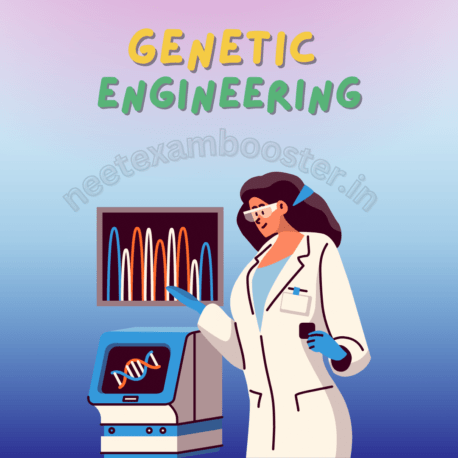Animal Kingdom Important Points: Animal kingdom is a classification of the living organisms that is characterized by the presence of the cells without cell walls, the ability to move, and the presence of some specialized sensory organs. Animals are classified into numerous groups based on the basis of their physical characteristics, including presence of a backbone, number of legs, and the other features.
Animal kingdom is diverse and ranges from a single-celled organisms like amoebas to complex, multicellular creatures like the human beings. Some animals are the predators, while the others are prey, and some forms the symbiotic relationships with other organisms. Overall, animal kingdom plays a crucial role in maintaining balance of ecosystems by serving as both the consumers and the producers in the food webs.
NCERT Biology Class 11 Chapter 4, 25 important points – Animal Kingdom Important Points
These are 25 Animal Kingdom Important Points given below.

1. Animals are classified on basis of the common fundamental features like cellular arrangement, symmetry of the body, presence or absence of the coelom, specific features of the digestive, circulatory and the reproductive system
2. Cellular level of organisation: the cells arranged as loose aggregates, present in the Porifera (sponges).
3. Tissue level of organisation: the cells performing same function forms tissues, present in coelenterates.
4. Organ level of organisation: tissues are grouped together to form an organ, which perhaps performs particular function, e.g. Platyhelminthes.
5. Organ system level of organisation: a few organs coordinatively combines to perform a certain physiological function, e.g. Annelids, Arthropods, Molluscs, Echinoderms and the Chordates.
6. Open circulatory system: the cells and the tissues directly receive the blood pumping out of the heart.
7. Closed circulatory system: the blood is circulated through the arteries, veins and the capillaries.
8. Diploblastic: the embryo with two germinal layers called the external ectoderm and the internal endoderm, e.g. Porifera, Cnidaria.
9. Triploblastic: the embryo with the three germinal layers, mesoderm layer between the ectoderm and the endoderm, e.g. Platyhelminthes to Chordates.
10. Asymmetrical: when there is no line of symmetry in the body, e.g. sponges.
11. Radial symmetry: any plane when passes through the centre divides the body in two symmetrical halves, e.g. coelenterates, ctenophores.
12. Bilateral symmetry: a plane divides the body in equal and symmetrical left and right halves, e.g. annelids, arthropods, etc.
13. Echinoderms exhibits the radial as well as the bilateral symmetry at different stages of their life cycle.
14. The body cavity between body wall and gut wall, lined by the mesoderm layer is called coelom.
15. Acoelomates: the body cavity is absent, e.g. Platyhelminthes.
16. Pseudocoelomates: mesoderm layer is present as the scattered pouches, e.g. Aschelminthes.
17. Coelomates: having the coelom (body cavity) e.g. from Annelida to Chordata.
18. Earthworm’s body shows the metameric segmentation.
19. Animals with the notochord are called chordates, and animals without notochord are called as non-chordates, e.g. Porifera to Echinodermata.
20. Animals are multicellular, heterotrophic organisms that belongs to kingdom Animalia.
21. Animals have a defined nervous system, which enables the sensation and the movement.
22. Animals are found in a variety of habitats, from deepest oceans to highest mountains.
23. Animals have a diverse range of body forms, including the vertebrates and the invertebrates.
24. Animals plays an important roles in ecosystem, such as pollination, seed dispersal, and as predators and prey.
Some of the animals, such as the humans, have significant impact on environment and other species.
25. Animals have an unique adaptations that enable them to survive and reproduce in their specific environmental conditions.
Some Important Questions From Biology Class 11
| Chapter Name | Quiz Link |
| The Living World | Play Now |
| Biological Classification | Play Now |
| Plant Kingdom | Play Now |
| Animal Kingdom | Play Now |
| Morphology of flowering plants | Play Now |
| Anatomy of flowering plants | Play Now |
| Cell: the unit of life | Play Now |
| Biomolecules | Play Now |
| Cell Cycle and cell division | Play Now |
| Transport in Plants | Play Now |
| Structural organisation in Animals | Play Now |
| Mineral nutrition | Play Now |
| Photosynthesis in higher plants | Play Now |
| Respiration in plants | Play Now |
| Plant Growth and development | Play Now |
| Digestion and Absorption | Play Now |
| Breathing and Exchange of Gases | Play Now |
| Body fluids and circulation | Play Now |
| Excretory products and their elimination | Play Now |
| Locomotion and Movement | Play Now |
| Neural Control and Coordination | Play Now |
| Chemical Coordination and Integration | Play Now |
Some Important Questions From Biology Class 12
| Chapter Name | Quiz Link |
| Reproduction in organism | Play Now |
| Sexual reproduction in flowering plant | Play Now |
| Human reproduction | Play Now |
| Reproductive health | Play Now |
| Principles of inheritance and variation | Play Now |
| Molecular basis of inheritance | Play Now |
| Evolution | Play Now |
| Human health and disease | Play Now |
| Strategies for enhancement in food product | Play Now |
| Microbes in human welfare | Play Now |
| Biotechnology principles and processes | Play Now |
| Biotechnology and its application | Play Now |
| Organism and population | Play Now |
| Ecosystem | Play Now |
| Biodiversity and its conservation | Play Now |
| Environment issue | Play Now |



















